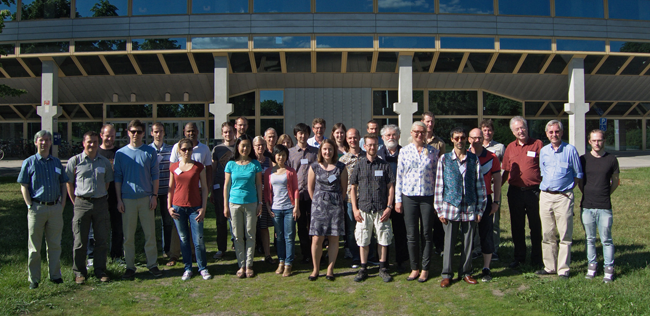

Users of the OpenIFS model, a version of ECMWF’s Integrated Forecasting System (IFS), are meeting at the Centre from 10 to 12 June for a workshop that focuses on uncertainty in numerical weather prediction (NWP).
The event, attended by 29 people from 10 countries, is being organized by the Department of Physics at the University of Oxford and hosted by ECMWF.
It brings together new, potential and established users of OpenIFS from universities, national meteorological services and other organisations. Keynote presentations on the role of uncertainty in NWP will be given by ECMWF Fellow Tim Palmer, a Royal Society Research Professor in Climate Physics at the University of Oxford, and Dr Roberto Buizza, the head of the Predictability Division at ECMWF.
There will also be hands-on work, including OpenIFS training and practical sessions on applying stochastic physics and running ensemble forecasts.
Expanding use
From its beginnings in 2011, the OpenIFS project has grown significantly: the model is now used in about 20 research projects and NWP training programmes across the world.
Recently the EC-Earth consortium decided to use OpenIFS for the atmospheric component of its Earth system model. EC-Earth brings together 29 European research institutes, which are collaborating to develop an Earth system model that can be used to conduct climate studies and to produce climate predictions and projections.
“We are pleased to have EC-Earth on board,” said Glenn Carver, the OpenIFS coordinator at ECMWF. “Their adoption of OpenIFS highlights the project’s growing role in major research projects, including in international collaborations.”
Dedicated support
The OpenIFS project makes an easy-to-use version of the operational IFS available to universities and research institutes. It does not include data assimilation or wave and ocean models.
The project also provides a single-column version of the IFS, which is particularly useful for teaching and research in physical parametrizations. “This has proved popular for testing changes to the model physics,” commented Filip Váňa, who is also part of the OpenIFS team at ECMWF.
ECMWF provides dedicated support to OpenIFS users. “User support is vital for the success of the project,” Glenn explained. “We regularly receive queries and do our best to resolve them quickly.”
Third user meeting
This week’s user meeting is the third after previous events at the University of Helsinki (2013) and Stockholm University (2014).

Thirty-six people took part in the user meeting at Stockholm University in June 2014.
The earlier events used a Linux virtual machine with Metview and OpenIFS installed to allow participants to work with real NWP models and to analyse forecasts provided in the hands-on sessions. This year, participants will have an opportunity to see ECMWF facilities first hand and to present their research to scientists at ECMWF.
Previous meetings have given rise to positive feedback and a demand for follow-up meetings.
In addition to providing a forum where users can discuss and practise using the OpenIFS model, the workshops provide opportunities to meet other international scientists interested in NWP and using the IFS.
They can thus help to build a user community which can provide mutual support and encourage international collaboration.
